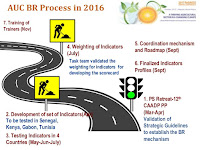Towards a Continental Post-Harvest Strategy of the African Union
If the AU's Comprehensive Africa Agricultural Development Programme (CAADP) is one of the AU;s best-kept secrets on committing governments to dedicate 10% of their budget to agriculture, then Post-Harvest Losses (PHL) may be yet-another acronym that remains an even bigger secret.
There can be no food without a structured agricultural sector, but recent studies indicate that, currently, a third of all food produced fr human consumption is lost or wasted from the farm to the consumers.
 In a statement copied to Ecowas Business News from the AU's Department on Agriculture and Rural Economy, the African Union Commission, Food and Agriculture Organisation, and Rockefeller Foundation closed a two-day meeting on 27th July, with an an expected outcome of a Continental Post-Harvest Strategy.
In a statement copied to Ecowas Business News from the AU's Department on Agriculture and Rural Economy, the African Union Commission, Food and Agriculture Organisation, and Rockefeller Foundation closed a two-day meeting on 27th July, with an an expected outcome of a Continental Post-Harvest Strategy.So far, five out of fifty-five countries -- Malawi, Mauritania, Rwanda, Togo and Uganda -- are on track towards achieving the post-harvest loss target by 2025.
Togo is clearly the only ECOWAS Member State to have made significant effort. Interestingly, the small, West African country hosts ECOWAS's Food and Agriculture Agency (ARAF).
At a time that the recent AUC-OECD report details how agriculture remains the main driver of jobs in the ECOWAS zone, the latest news from Nairobi's meeting makes grim reading. It is arguable that, even as there are calls for a concerted effort for member States to put paid to PHL on a continent-wide basis, there may be a need to consider a regional strategy as well.
ENDS
Comments
Post a Comment